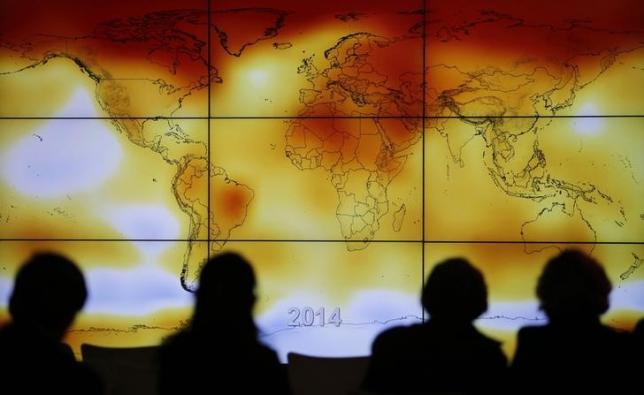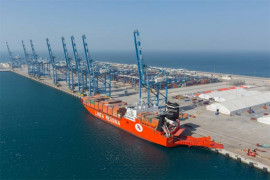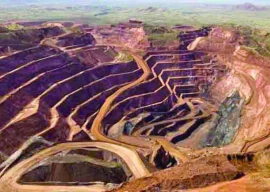
The dense agglomeration of people, buildings and firms in cities brings enormous opportunities, but it has never been without challenges.
According to a UN Habitat’s report, cities contribute 70% to the harmful greenhouse gas emissions in the planet. Climate change is poised to expose urban economies to new kinds of challenges and opportunities in both developed and developing countries.
Political parties in bliss of ignorance on climate
Meanwhile, London Mayor Sadiq Khan has remarked, “Climate change is one of the biggest, if not the biggest, risks to London. I want to put our city at the leading edge of the fight against this risk.”
The cities in coastal areas are obviously the first ones in line to bear the consequences of climate change. However, every city will confront tough choices in the areas of transportation, energy, clean drinking water, health care and decent jobs.
In Pakistan, for example, rising temperatures and higher humidity levels, coupled with rapid urbanisation and dilapidated service delivery, have enhanced the risks of climate change in the cities.
How to address challenges
There is no single recipe for all cities, so every city will have to devise its own path to address these challenges. Some of the important areas for action include urban density, transportation, energy efficiency, housing and local governance.
Urban density is often wrongly presented as a risk factor in the dialogue on climate and environment, even though it is the strongest tool to combat climate change. If a higher number of people occupy compact space, it is better than sprawls destroying green lands.
Urban density also helps to economise service delivery. For example, in Pakistan, sprawling cities are encroaching fertile agriculture lands and scarce forestation.
Transportation is the strongest tool for changing the course in cities as it contributes 13% of global greenhouse gas emissions. The cost and emission of greenhouse gases during commuting restricts social mobility and healthy living.
When it comes to transportation policies, investment is generally geared towards widening roads and other physical infrastructure. The situation of walkways is deplorable in both Pakistan and other developing economies. It is appreciable that Pakistan has recently started development of bus and rail transit systems in mega cities, though there are reservations about the design and operational governance of these projects.
Technology is going to reshape transportation with electric cars and sharing economies. Cities will have to plan for such adjustments in coming decades.
Industrial activity is responsible for about 20% of global greenhouse gas emissions. Moving forward, financial markets and products will have to focus on energy-efficient technologies.
Governments, industry and utility companies will have to develop partnerships to improve efficiency in industrial activity. The implementation of University of Delaware’s Sustainable Energy Utility model – innovative financing through partnership for energy efficiency and renewable energy – has brought immense benefits in various states in the US.
Commercial and residential buildings in cities emit 8% of global greenhouse gas emissions. Most of it happens in the developed world.
For example, in the US, commercial and residential buildings contribute 39% of carbon dioxide emissions per year, mostly through the use of 70% of electricity.
Going forward, there are energy efficiency solutions for buildings that need to be incorporated. Green buildings require fundamental shifts in the usage of construction material, building designs and energy usage.
Furthermore, housing in Pakistani cities and other developing countries is a major challenge. The regulations for high-rise buildings promote slums and restrict social mobility for the poor. An enormous rise in the young population in Pakistan and many other developing economies calls for reshaping the housing infrastructure. There is a need to promote shared livings to reduce the cost of housing.
Finally, the key to resolving many of the above challenges will be the capability and effectiveness of local governments in cities.
In Pakistan, the cities are governed in a colonial fashion. The city governments lack governance and intellectual capabilities to respond to emerging challenges.
World Forest Day: Conserve water, trees to mitigate climate change impact
The United Nations’ Sustainable Development Goal (SDG) 11 envisages sustainable cities and communities by ensuring affordable housing, upgrading of slums, reduction in environmental impact and provision of public services.
This goal cannot be achieved without appropriate institutional reforms in the local governance systems in the cities and subsequent focus on partnerships between all tiers of government and society at large.
City governments would need to exploit both public and private investment and to reshape financial management to undertake many initiatives. As I mentioned at the start that globally, city governments are preparing to adapt and respond to climate change. But such efforts are missing in Pakistan.
The writer is a public policy practitioner and researcher
Published in The Express Tribune, June 5th, 2017.
Like Business on Facebook, follow @TribuneBiz on Twitter to stay informed and join in the conversation.























COMMENTS
Comments are moderated and generally will be posted if they are on-topic and not abusive.
For more information, please see our Comments FAQ